Like a traffic cop directing traffic at a downtown intersection, two interest groups have reportedly given Mayor Frank Jackson’s administration the stop hand and a whistle for going the wrong way with its proposed new Cleveland Police Department (CPD) headquarters (HQ).
According to a Jackson administration source, the rebuke reportedly came from two interest groups — the local business community and from downtown law firms.
The local business community, whose primary mouthpiece is the Greater Cleveland Partnership, expressed its concerns about the administration’s proposed site for a CPD HQ at East 75th Street and the under-construction Opportunity Corridor.
According to the source, the business community wanted to use the Opportunity Corridor to attract growing businesses from throughout Greater Cleveland. Or, better yet, it would attract new businesses from outside the region.
The Opportunity Corridor?is a 3-mile-long, $350 million boulevard that will link Interstates 77 and 490 with University Circle by 2021. But it also is, in part, being used to clear and clean polluted, vacant industrial sites that have lain fallow for 40 years and began falling into decline 40 years before that.
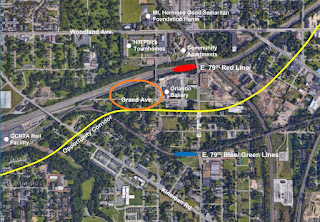 |
| The orange oval is the proposed site for the new CPD HQ on East 75th Street with the alignment for the Opportunity Corridor boulevard shown as a yellow line (Google). |
The goal for the Opportunity Corridor is to attract employers to hundreds of acres of newly cleared land that are accessible to the city’s under-employed residents. Also running through the Opportunity Corridor are high-frequency transit routes including all three of the region’s rail transit lines plus several bus routes that would help provide that access.
“The Opportunity Corridor isn’t for relocating up to 1,000 police department jobs from downtown,” the source said.
Similarly, the source said downtown law firms have also expressed concerns about moving the CPD HQ out of downtown where the region’s largest concentration of lawyers, support staff and their offices are located.
Lawyers typically accompany clients in meetings with police investigators, facing interrogations or appearing in line-ups at the current police headquarters on Ontario Street and St. Clair Avenue downtown. Lawyers, paralegals and legal assistants also frequently visit the police station to request and gather reports, records and other documents.
Many lawyers or their staffpersons can walk from their offices to the police station, or take one of the free trolleys that circulates around downtown. While parking is plentiful downtown, with 60 acres of parking lots and structures available, someone could walk halfway to the police station in the time it takes to get to their car and drive it out of a parking garage.
Relocating the CPD HQ increases travel time and costs for law firms and ultimately for their clients. And, with more time needed for travel means less time lawyers, paralegals and legal assistants can get work done.
Ward 15 City Councilman Matt Zone, chair of council’s Safety Committee, did not respond to a personal message seeking comment prior to publication of this article.
City Councilman Kerry McCormack, whose Ward 3 includes downtown, Tremont and Ohio City, would not comment on the source’s information. However, he doubted that a new CPD HQ would help jump-start development in the Opportunity Corridor, as the Jackson administration has claimed.
“I don’t believe it will be an economic catalyst,” he said. “It won’t hurt the (Opportunity Corridor) area but I also don’t want to promise people that it’s going to be some economic development-, job-creating machine because, by itself, it won’t be.”
McCormack added that he didn’t mind seeing the CPD HQ move out of the heart of the central business district. But he said that he would like to see it on the near-east side of downtown. McCormack said the Plain Dealer Plaza, 1801 Superior Ave., was an ideal location.
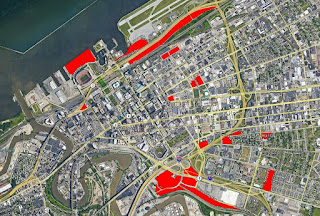 |
| Properties shown in red are large-scale, underutilized parcels that currently are owned by city, county or state government agencies and may offer ideal sites for a CPD HQ (Google). |
The city was near to acquiring that property for $19.5 million last year until the transaction was abruptly halted without any official reason given. Another $40 million in building renovation costs were anticipated for that site.
Two other buildings were considered for the CPD HQ — 55 Public Square built in 1958 and the pre-1977 Central Police Station, 2001 Payne Ave. built in 1937. But the reuse of both structures with modern police station facilities did not meet city requirements. So the city pursued a newly built CPD HQ in excess of 200,000 square feet, not including training facilities, storage or parking.
City officials have said that they wanted to move quickly on the project. But the city’s first request for proposals for the project was issued in early 2017 and officials still are mulling site options. Properties that already are publicly owned might be had at a far lower cost and without the delays of negotiation.
There are multiple underutilized and large properties owned by the city, county and state in and near downtown. Some of those properties, like the lakefront land north of First Energy Stadium, are already spoken for.
But the largest publicly owned, underutilized property in or near downtown is the former Norfolk Southern Corp. intermodal rail yard between the Inner Belt (I-90) highway and the Main Post Office. It is currently owned by the Ohio Department of Transportation (ODOT) and measures about 49 acres, according to county records.
ODOT District 12 Public Information Officer Brent Kovacs said earlier this year that the transportation department considers that site to be “excess property” and would like to sell the land. It acquired all 49 acres in 2011 for $29.8 million so that a small portion of it could be used for the construction of the Inner Belt’s new Cuyahoga Viaduct bridges.
END

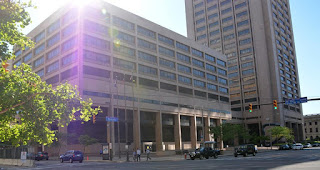
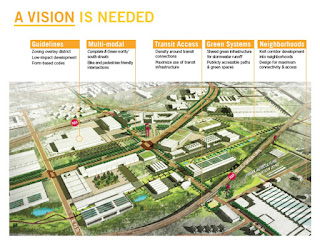
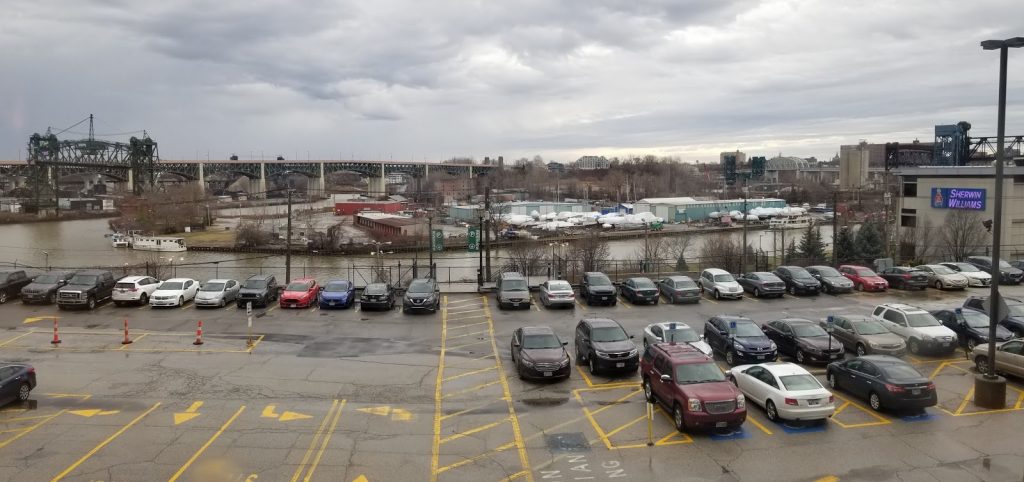
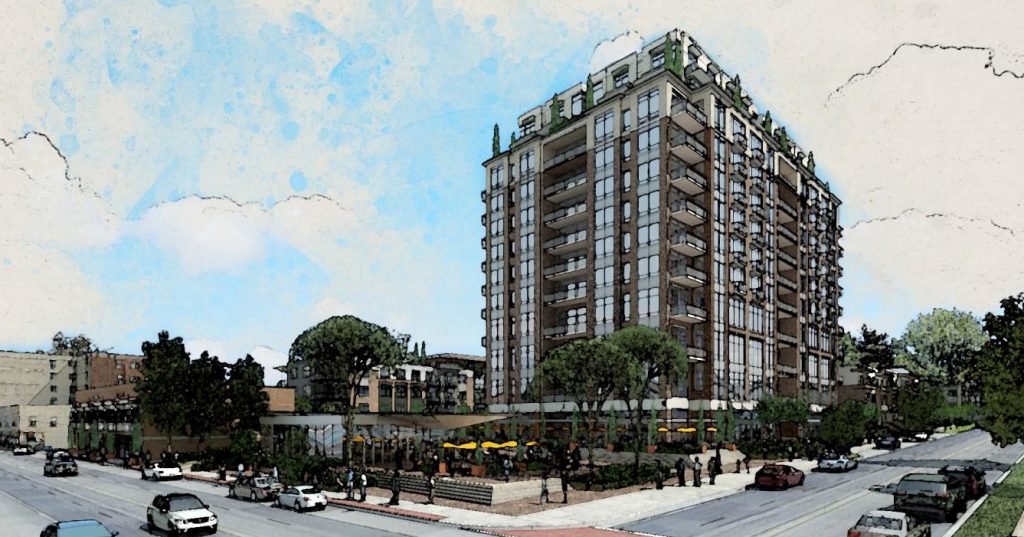
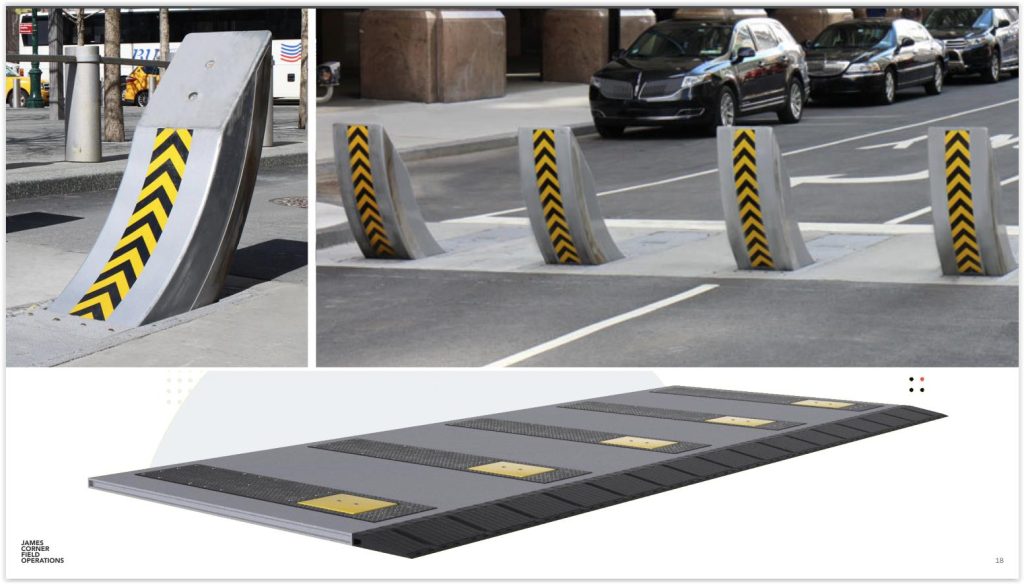
If Sherwin chooses the Bedrock site then the Jacobs / Weston lots are available again for a new Police HQ and a County Justice Center / Jail. That would keep them centrally located. Then demolish the old justice center block to get ready for redevelopment – including extra parking spaces for the Convention Center and Hilton.
Seems like a good idea or we can get another 40 foot tall headquarters downtown
the current Justice Center block would be available for that…